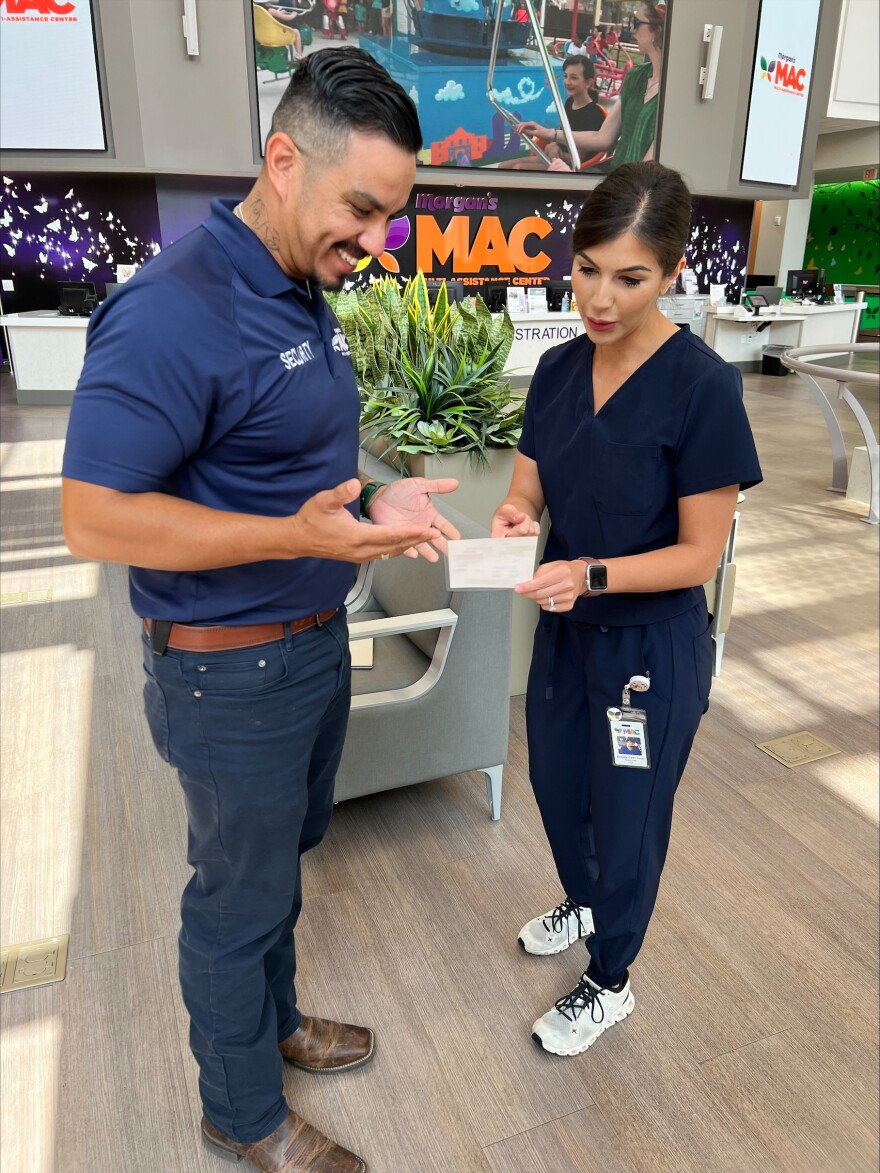Sign up for TPR Today, Texas Public Radio's newsletter that brings our top stories to your inbox each morning.
Researchers at the University of Texas at San Antonio (UTSA) have created a new training module designed to teach first responders how to better communicate with people with developmental disabilities like autism.
The goal is to give emergency departments, EMTs, and law enforcement officers the tools to de-escalate the situation so they don’t have to use restraints.
“The approach I typically take in a crisis situation is very different than the way people are trained in emergency departments [and as] first responders,” said Leslie Neely, an educational psychology professor at UTSA. “It's the difference of escalating to a point of needing a restraint or escalating to a point of harm for both individuals, those being restrained [and those] who are engaging in the restraint.”
The consequences of not knowing how to respond in a crisis can be severe. “I've actually testified on cases where there was kind of the ultimate injury, where somebody actually passed away from a restraint,” she added.
As a behavioral therapist, Neely teaches children with autism how to communicate in positive ways. But through her research, she realized that component was missing from most first responder training.
“Just that little piece — learning how to communicate differently — was completely absent: looking at body language, trying to give them time to process,” she explained.
So, Neely and her research team decided to bridge that gap by creating new training.
As part of that research, UTSA doctoral student Kim Cantu-Davis interviewed autistic adults about their experiences with law enforcement. They told her their best interactions were with police officers who took a beat and gave them extra time and space.

“It was really interesting to hear their perspectives on it, because we would think, 'okay, you just comply, right?' But sometimes when you're over stimulated, it's hard to be able to do that,” she added.
The researchers worked with the autistic adults to write steps for first responders to follow — for example, give six feet of space and approach slowly.
“Once they've calmed down, then you can motivate them. So, we would say, ‘Okay, well, if you wanted this toy or to listen to this song,’ you'd find something that would motivate them to want to engage in what you're asking them to do,” Cantu-Davis said.
When the situation isn’t so dire that it requires immediate intervention, the steps call for first responders to give the person at least 30 seconds between each statement to give them time to process.
“Again, this is a situation where they're over-stimulated,” Cantu-Davis said. “And if you're just repeating, ‘okay, I want you to do this and this and this,’ they're not going to be able to process that as fast as we would think or would like them to.”
Another part of their research was speaking with clinicians and outpatients. They also gathered information through augmented reality.
“So, it was like an avatar that would engage in behavior,” Cantu-Davis added. “So, we had the avatar that was like a child so the clinician or participant would use motivators for the child to engage.”
“A child may be motivated by a Taylor Swift song," Cantu-Davis explained. “So being able to get them to motivate, that would be the motivation to want to the song. But again, in sometimes the first responders aren't going to know what the child is motivated for.”
Neely and Cantu-Davis recently presented their findings in a workshop to several emergency service departments. They learned a majority of calls the departments receive are not from parents and other caregivers who need help with adolescents in crisis.
“They're getting a little bit too big for their caregivers, [and] now their caregivers are using first responding services to help to support their kind of crisis situations,” Neely said.
Neely and Cantu-Davis are now piloting an AI program incorporating the steps they co-created with the group of autistic adults. The program lets EMTs and police officers practice scenarios they’ll find in the field.
The hope is that once they know better, everyone will be safer for it.

Neely said organizations that specialize in accessibility like Morgan’s Multi-Assistance Center are also incorporating their research into their annual training.
“We worked with them, initially for some of their outpatient clinicians, and then they loved it so much now we do it as part of their annual training,” she said.
Neely and Cantu-Davis said they hope to also introduce a version of their training to schools next year.




